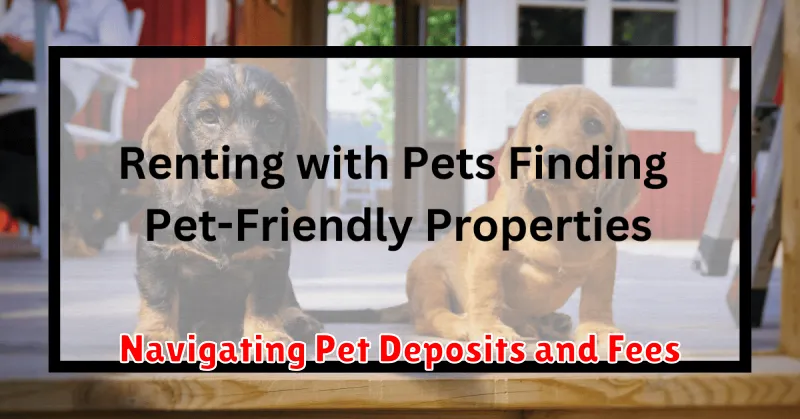Finding the perfect rental property can be challenging, especially when you’re a pet owner. Renting with pets often presents unique hurdles, from strict pet policies and pet fees to limited pet-friendly housing options. This comprehensive guide aims to equip prospective tenants with the necessary tools and knowledge to navigate the pet rental market successfully. We’ll delve into the key aspects of securing a lease, including understanding pet deposits, creating compelling pet resumes, and fostering positive landlord-tenant relationships.
Whether you’re searching for pet-friendly apartments, houses, or townhomes, understanding the nuances of renting with pets is crucial. From preparing a comprehensive pet application to negotiating lease terms, this guide will provide valuable insights into the pet rental process. By following the strategies and advice outlined here, you’ll increase your chances of finding a comfortable and welcoming home for both you and your beloved pets.
Finding Pet-Friendly Properties
Locating a suitable rental property when you have pets requires diligent research and proactive communication. Begin your search by using online platforms that allow filtering for “pet-friendly” options. Specify the type and size of your pet when contacting landlords or property managers.
Don’t limit yourself to explicitly advertised pet-friendly properties. Some landlords may be open to negotiation, especially if you can present a strong pet resume including vet records, training certificates, and references from previous landlords. Be prepared to discuss pet deposits, pet rent, or any specific pet-related clauses within the lease agreement.
Consider attending open houses or scheduling viewings to assess the property’s suitability for your pet’s needs. Look for features such as fenced yards, nearby parks, or pet-friendly amenities within the building or complex.
Navigating Pet Deposits and Fees

Pet deposits and pet fees are common costs associated with renting with a pet. Understanding the difference is crucial. A pet deposit is a refundable amount intended to cover potential damages caused by your pet. A pet fee, on the other hand, is a non-refundable charge that covers the general wear and tear associated with having a pet in the unit.
Landlords may charge one or both. Be sure to inquire about the specific costs and policies upfront. These should be clearly outlined in your lease agreement. Pay close attention to what constitutes acceptable pet-related damage versus normal wear and tear to avoid disputes later.
Understanding Pet Policies Clearly
Pet policies are crucial when renting with a companion animal. Thoroughly review any lease agreements or property rules concerning pets. These policies can vary significantly between properties.
Pay close attention to restricted breeds. Some properties may prohibit specific breeds or sizes of animals. Weight limits and the number of allowed pets are also common restrictions.
Pet fees, including deposits and monthly charges, should be clearly defined. Understand the terms of these fees and whether they are refundable. Don’t hesitate to ask for clarification on any aspect of the pet policy before signing a lease.
Maintaining Good Tenant-Pet Reputation
Maintaining a positive reputation as a responsible pet owner is crucial for successful renting. This ensures good standing with your current landlord and increases your chances of securing future rentals. Proactive communication with your landlord regarding any pet-related concerns demonstrates responsibility.
Immediate attention to any pet-caused damage, however small, is essential. Addressing issues promptly shows respect for the property. Consistent adherence to the pet clauses within your lease agreement, such as waste disposal and noise control, builds trust with your landlord.
Addressing Potential Property Damage
Pet ownership comes with the responsibility of mitigating potential property damage. Open communication with your landlord is crucial. Discuss any concerns regarding existing damage and establish clear expectations for repairs.
Documenting the property’s condition before moving in is essential. Take photos and videos, noting any pre-existing wear and tear. This documentation protects both you and the landlord in case of disputes. Consider a pet deposit to cover potential damages caused by your pet. This demonstrates responsibility and provides financial security for the landlord.
Proactive measures to prevent damage are also vital. Regular cleaning, providing appropriate scratching posts for cats, and ensuring proper training for dogs can minimize the risk of damage.

